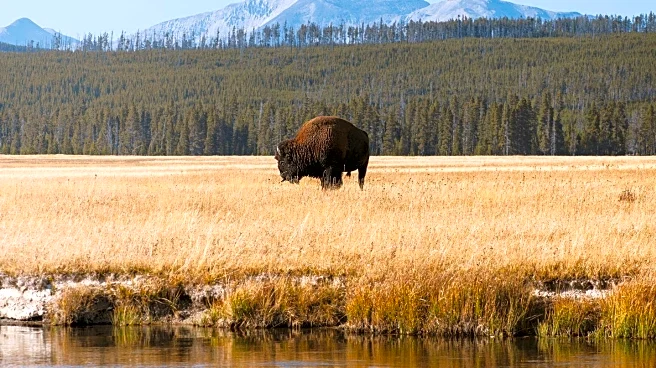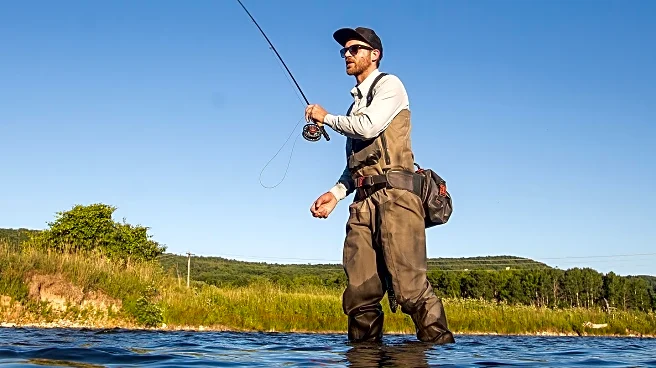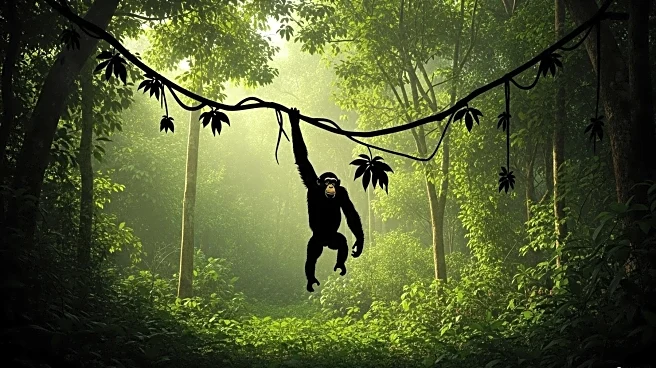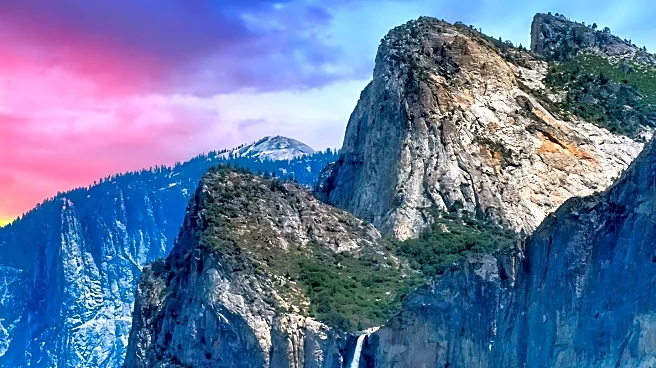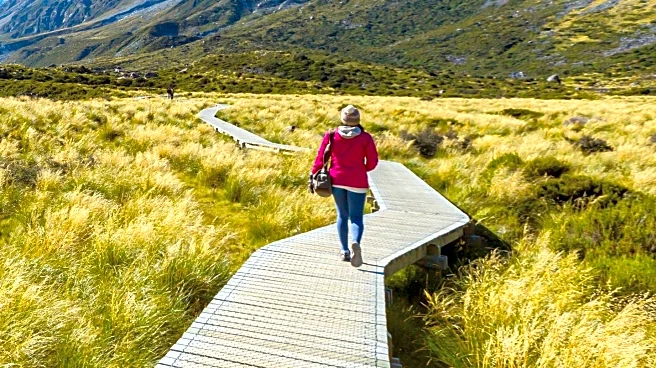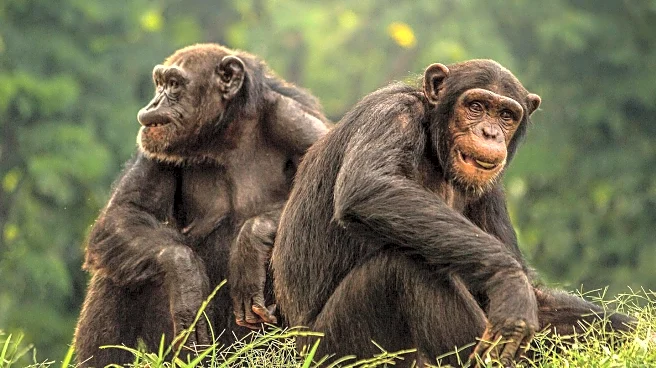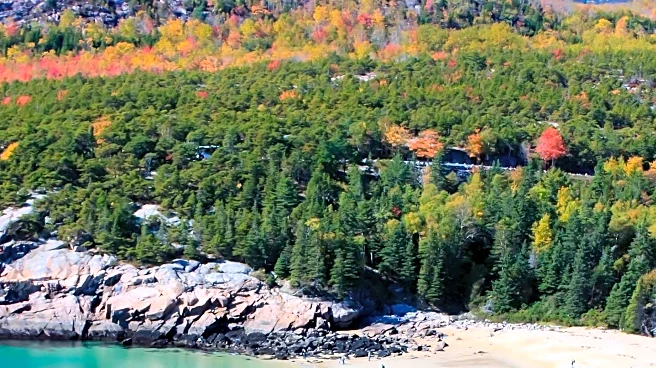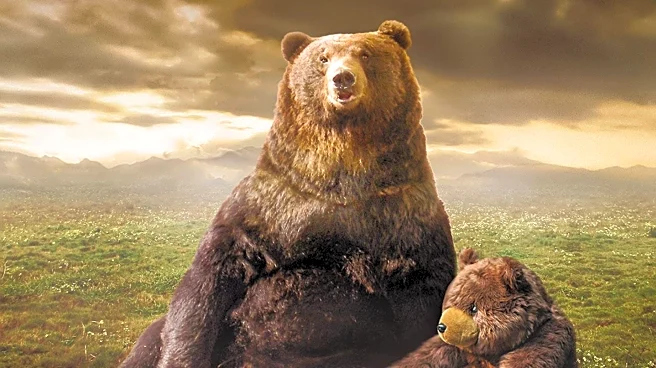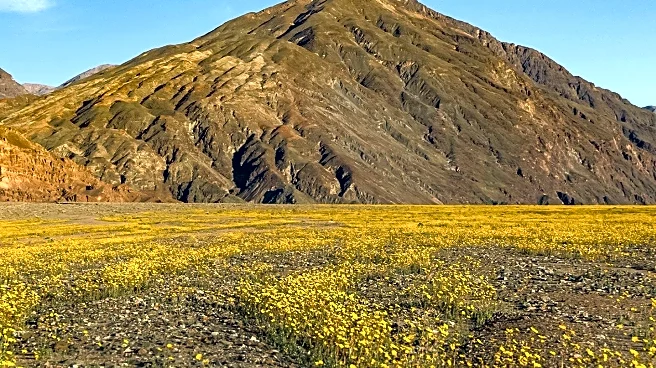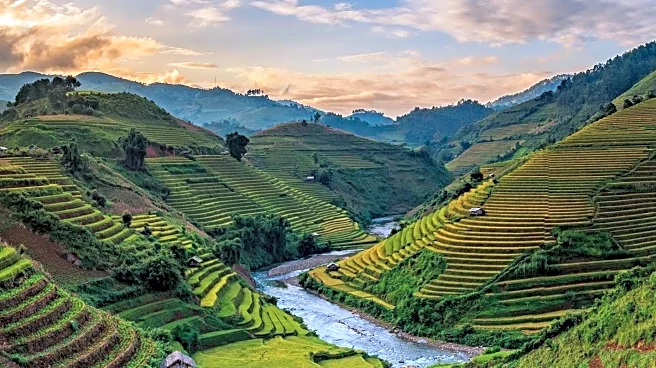What is the story about?
What's Happening?
A recent fall trip to Yellowstone National Park provided visitors with remarkable wildlife encounters, including bugling elk, grizzly bears, and bison. The trip, planned months in advance, aimed to capture the park's wildlife during cooler weather. Visitors experienced the sights and sounds of the Norris geyser basin and Hayden Valley, known for its grizzly bears and bison. The trip included visits to Tower Falls and the Roosevelt Arch, with sightings of elk, mule deer, pronghorns, and a coyote hunting rodents. Despite a government shutdown, Old Faithful erupted after a delay, marking a memorable end to the visit.
Why It's Important?
Yellowstone National Park is a significant natural reserve, attracting tourists and wildlife enthusiasts. The park's diverse ecosystem supports various species, offering educational and recreational opportunities. Wildlife sightings enhance visitor experiences, promoting conservation awareness. The park's ability to draw tourists contributes to local economies, supporting businesses and employment. The government shutdown's impact on park operations highlights the importance of federal support for national parks. Preserving such natural habitats is crucial for biodiversity and environmental health, influencing public policy and conservation efforts.
What's Next?
As the fall season continues, Yellowstone may see increased visitor numbers, drawn by the opportunity to witness wildlife in their natural habitat. The park's management will need to address challenges posed by the government shutdown, ensuring continued access and safety for visitors. Conservation efforts will remain a priority, with potential initiatives to protect wildlife and maintain the park's ecological balance. Future trips may focus on educational programs to raise awareness about the park's significance and the need for sustainable tourism practices.
Beyond the Headlines
The trip underscores the cultural and ethical importance of preserving natural landscapes like Yellowstone. It highlights the role of national parks in fostering a connection between humans and nature, promoting environmental stewardship. The experience of witnessing wildlife in their natural setting can inspire a deeper appreciation for conservation efforts. Long-term, such trips may influence public attitudes towards environmental protection, encouraging support for policies that prioritize sustainability and habitat preservation.
AI Generated Content
Do you find this article useful?
